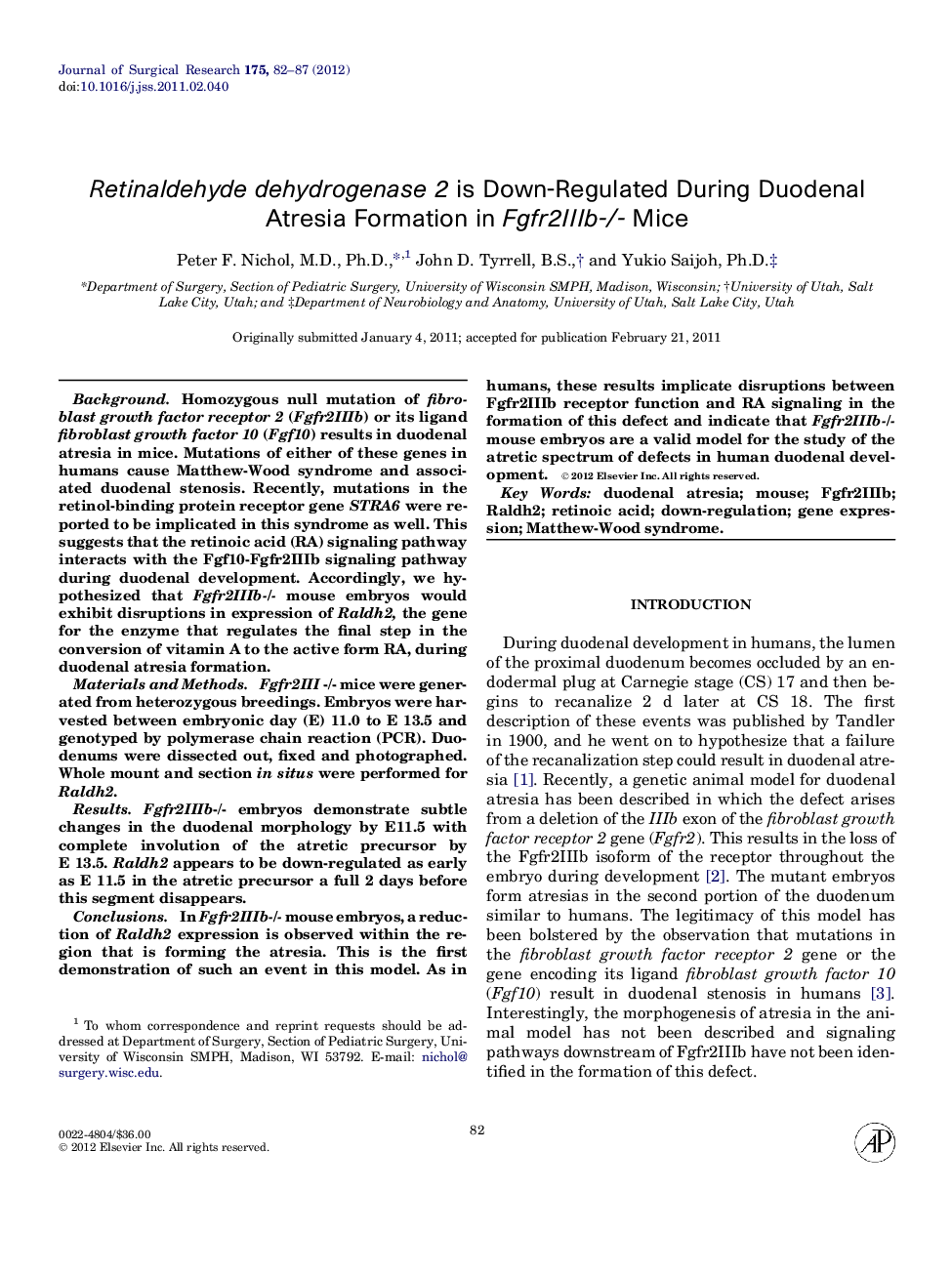| Article ID | Journal | Published Year | Pages | File Type |
|---|---|---|---|---|
| 4301329 | Journal of Surgical Research | 2012 | 6 Pages |
BackgroundHomozygous null mutation of fibroblast growth factor receptor 2 (Fgfr2IIIb) or its ligand fibroblast growth factor 10 (Fgf10) results in duodenal atresia in mice. Mutations of either of these genes in humans cause Matthew-Wood syndrome and associated duodenal stenosis. Recently, mutations in the retinol-binding protein receptor gene STRA6 were reported to be implicated in this syndrome as well. This suggests that the retinoic acid (RA) signaling pathway interacts with the Fgf10-Fgfr2IIIb signaling pathway during duodenal development. Accordingly, we hypothesized that Fgfr2IIIb-/- mouse embryos would exhibit disruptions in expression of Raldh2, the gene for the enzyme that regulates the final step in the conversion of vitamin A to the active form RA, during duodenal atresia formation.Materials and MethodsFgfr2III -/- mice were generated from heterozygous breedings. Embryos were harvested between embryonic day (E) 11.0 to E 13.5 and genotyped by polymerase chain reaction (PCR). Duodenums were dissected out, fixed and photographed. Whole mount and section in situs were performed for Raldh2.ResultsFgfr2IIIb-/- embryos demonstrate subtle changes in the duodenal morphology by E11.5 with complete involution of the atretic precursor by E 13.5. Raldh2 appears to be down-regulated as early as E 11.5 in the atretic precursor a full 2 days before this segment disappears.ConclusionsIn Fgfr2IIIb-/- mouse embryos, a reduction of Raldh2 expression is observed within the region that is forming the atresia. This is the first demonstration of such an event in this model. As in humans, these results implicate disruptions between Fgfr2IIIb receptor function and RA signaling in the formation of this defect and indicate that Fgfr2IIIb-/- mouse embryos are a valid model for the study of the atretic spectrum of defects in human duodenal development.
